Capacitive Measurements of SiO2 Films of Different Thicknesses Using a MOSFET-Based SPM Probe
Abstract
1. Introduction
2. The ToGoFET Probe
2.1. Basic Principle
2.2. Fabrication of the ToGoFET Probe
3. Capacitive Imaging of a Buried Electrode
3.1. Sample Preparation
3.2. Experimental
3.3. Local Capacitance Imaging of an SiO2-Covered Electrode
4. Discussion
5. Conclusions
Author Contributions
Funding
Conflicts of Interest
References
- Palumbo, F.; Wen, C.; Lombardo, S.; Pazos, S.; Aguirre, F.; Eizenberg, M.; Hui, F.; Lanza, M. A review on dielectric breakdown in thin dielectrics: Silicon dioxide, high-k, and layered dielectrics. Adv. Funct. Mater. 2020, 30, 1900657. [Google Scholar] [CrossRef]
- Olbrich, A.; Ebersberger, B.; Boit, C. Conducting atomic force microscopy for nanoscale electrical characterization of thin SiO2. Appl. Phys. Lett. 1998, 73, 3114–3116. [Google Scholar] [CrossRef]
- Frammelsberger, W.; Benstetter, G.; Kiely, J.; Stamp, R. Thickness determination of thin and ultra-thin SiO2 films by C-AFM IV-spectroscopy. Appl. Surf. Sci. 2006, 252, 2375–2388. [Google Scholar] [CrossRef]
- Lee, D.T.; Pelz, J.P.; Bhushan, B. Instrumentation for direct, low frequency scanning capacitance microscopy, and analysis of position dependent stray capacitance. Rev. Sci. Instrum. 2002, 73, 3525–3533. [Google Scholar] [CrossRef]
- Lee, D.; Pelz, J.P.; Bhushan, B. Scanning capacitance microscopy for thin film measurements. Nanotechnology 2006, 17, 1484–1491. [Google Scholar] [CrossRef]
- Fumagalli, L.; Gramse, G.; Esteban-Ferrer, D.; Edwards, M.; Gomila, G. Quantifying the dielectric constant of thick insulators using electrostatic force microscopy. Appl. Phys. Lett. 2010, 96. [Google Scholar] [CrossRef]
- Gramse, G.; Gomila, G.; Fumagalli, L. Quantifying the dielectric constant of thick insulators by electrostatic force microscopy: Effects of the microscopic parts of the probe. Nanotechnology 2012, 23. [Google Scholar] [CrossRef]
- Cadena, M.J.; Sung, S.H.; Boudouris, B.W.; Reifenberger, R.; Raman, A. Nanoscale mapping of dielectric properties of nanomaterials from kilohertz to megahertz using ultrasmall cantilevers. ACS Nano 2016, 10, 4062–4071. [Google Scholar] [CrossRef] [PubMed]
- Van Der Hofstadt, M.; Fabregas, R.; Biagi, M.C.; Fumagalli, L.; Gomila, G. Nanoscale dielectric microscopy of non-planar samples by lift-mode electrostatic force microscopy. Nanotechnology 2016, 27, 405706. [Google Scholar] [CrossRef]
- Fabregas, R.; Gomila, G. Dielectric nanotomography based on electrostatic force microscopy: A numerical analysis. J. Appl. Phys. 2020, 127. [Google Scholar] [CrossRef]
- Kopanski, J.J.; You, L.; Ahn, J.-J.; Hitz, E.; Obeng, Y.S. Scanning probe microscopes for subsurface imaging. ECS Trans. 2014, 61. [Google Scholar] [CrossRef]
- Fumagalli, L.; Ferrari, G.; Sampietro, M.; Gomila, G. Dielectric-constant measurement of thin insulating films at low frequency by nanoscale capacitance microscopy. Appl. Phys. Lett. 2007, 91. [Google Scholar] [CrossRef]
- Gomila, G.; Toset, J.; Fumagalli, L. Nanoscale capacitance microscopy of thin dielectric films. J. Appl. Phys. 2008, 104. [Google Scholar] [CrossRef]
- Kopanski, J.J.; You, L.; Li, J.; Ahn, J.J.; Obeng, Y.S. Characterization of buried interfaces with scanning probe microscopes. ECS Meet. Abstr. 2016, 72, 131–138. [Google Scholar] [CrossRef]
- Huber, H.P.; Moertelmaier, M.; Wallis, T.M.; Chiang, C.J.; Hochleitner, M.; Imtiaz, A.; Oh, Y.J.; Schilcher, K.; Dieudonne, M.; Smoliner, J.; et al. Calibrated nanoscale capacitance measurements using a scanning microwave microscope. Rev. Sci. Instrum. 2010, 81, 113701. [Google Scholar] [CrossRef]
- You, L.; Ahn, J.-J.; Obeng, Y.S.; Kopanski, J.J. Subsurface imaging of metal lines embedded in a dielectric with a scanning microwave microscope. J. Phys. D Appl. Phys. 2015, 49, 45502. [Google Scholar] [CrossRef]
- Shin, K.; Kang, D.S.; Lee, S.H.; Moon, W. A scanning microscopy technique based on capacitive coupling with a field-effect transistor integrated with the tip. Ultramicroscopy 2015, 159, 1–10. [Google Scholar] [CrossRef] [PubMed]
- Ma, Z.M.; Kou, L.; Naitoh, Y.; Li, Y.J.; Sugawara, Y. The stray capacitance effect in Kelvin probe force microscopy using FM, AM and heterodyne AM modes. Nanotechnology 2013, 24, 225701. [Google Scholar] [CrossRef]
- Estevez, I.; Chrétien, P.; Schneegans, O.; Houzé, F. Specific methodology for capacitance imaging by atomic force microscopy: A breakthrough towards an elimination of parasitic effects. Appl. Phys. Lett. 2014, 104. [Google Scholar] [CrossRef]
- Tseng, A.A. Recent developments in nanofabrication using focused ion beams. Small 2005, 1, 924–939. [Google Scholar] [CrossRef]
- Lee, S.H.; Lim, G.; Moon, W.; Shin, H.; Kim, C.-W. V-shaped metal–oxide–semiconductor transistor probe with nano tip for surface electric properties. Ultramicroscopy 2008, 108, 1094–1100. [Google Scholar] [CrossRef] [PubMed]
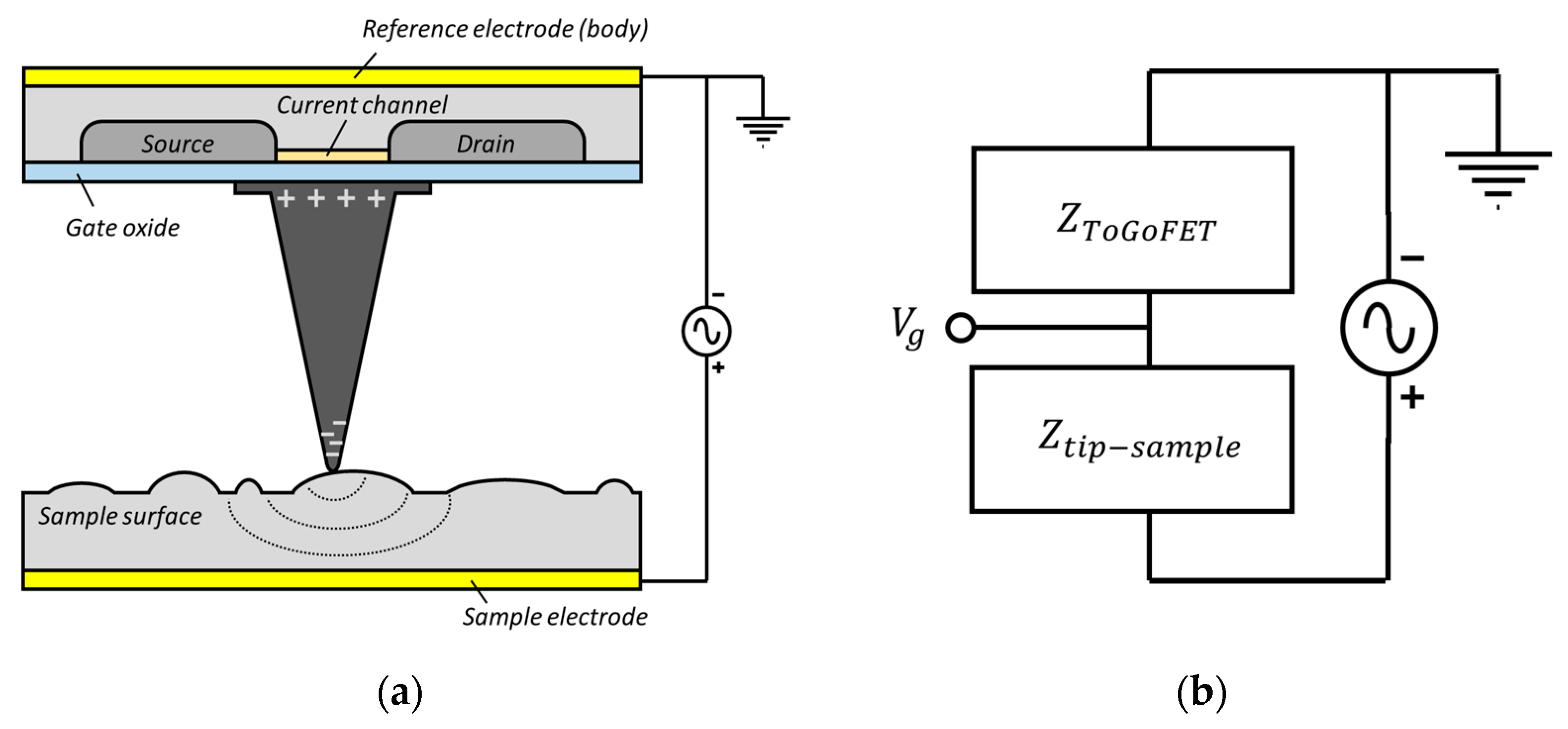
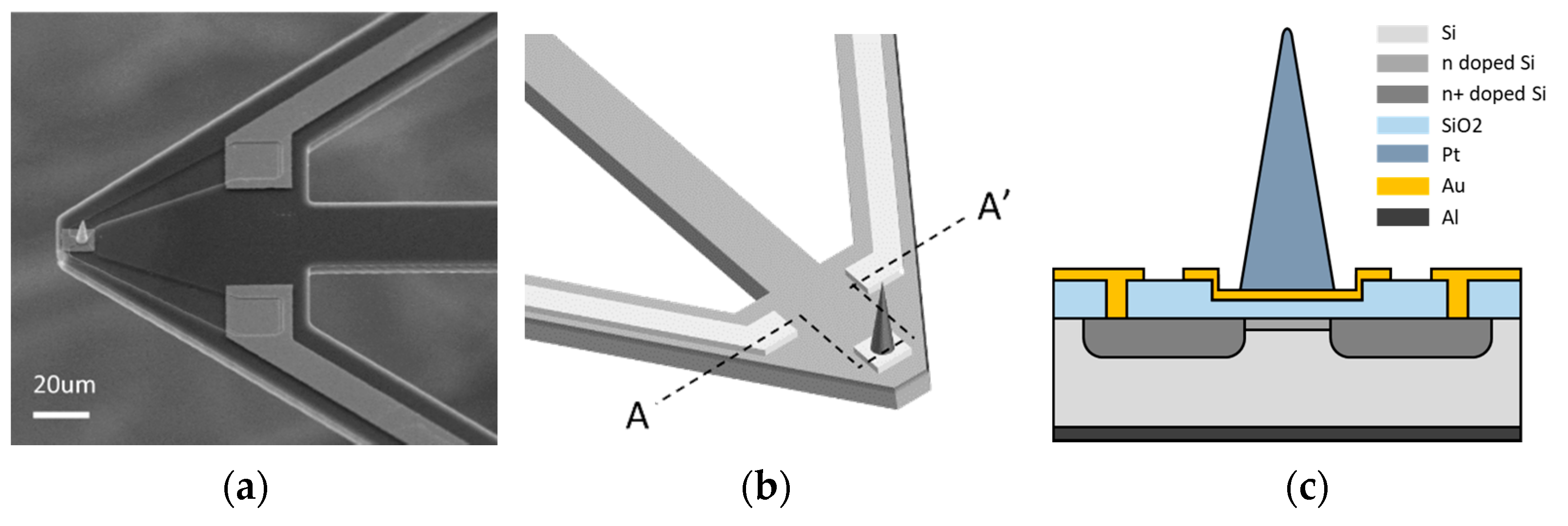
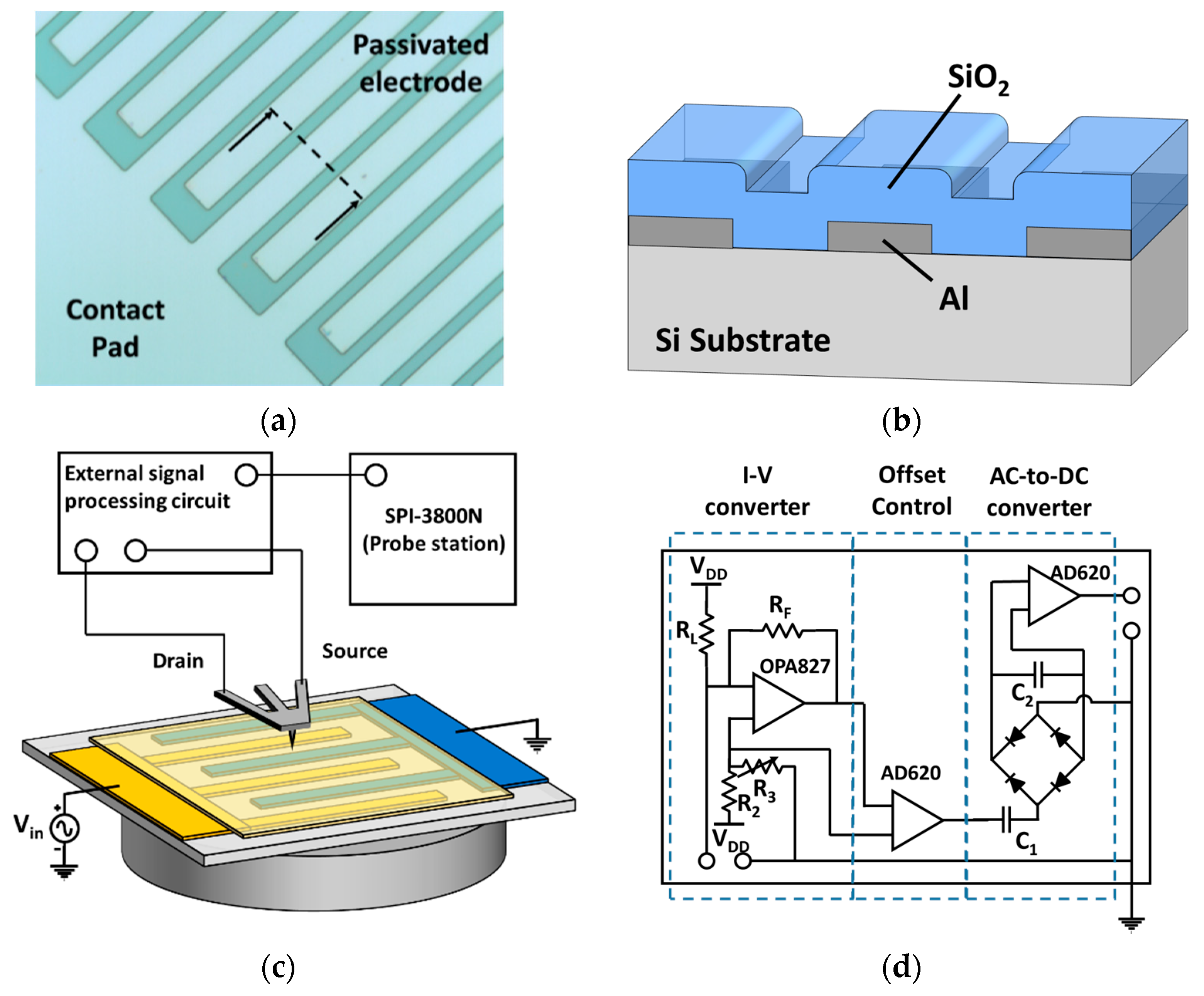
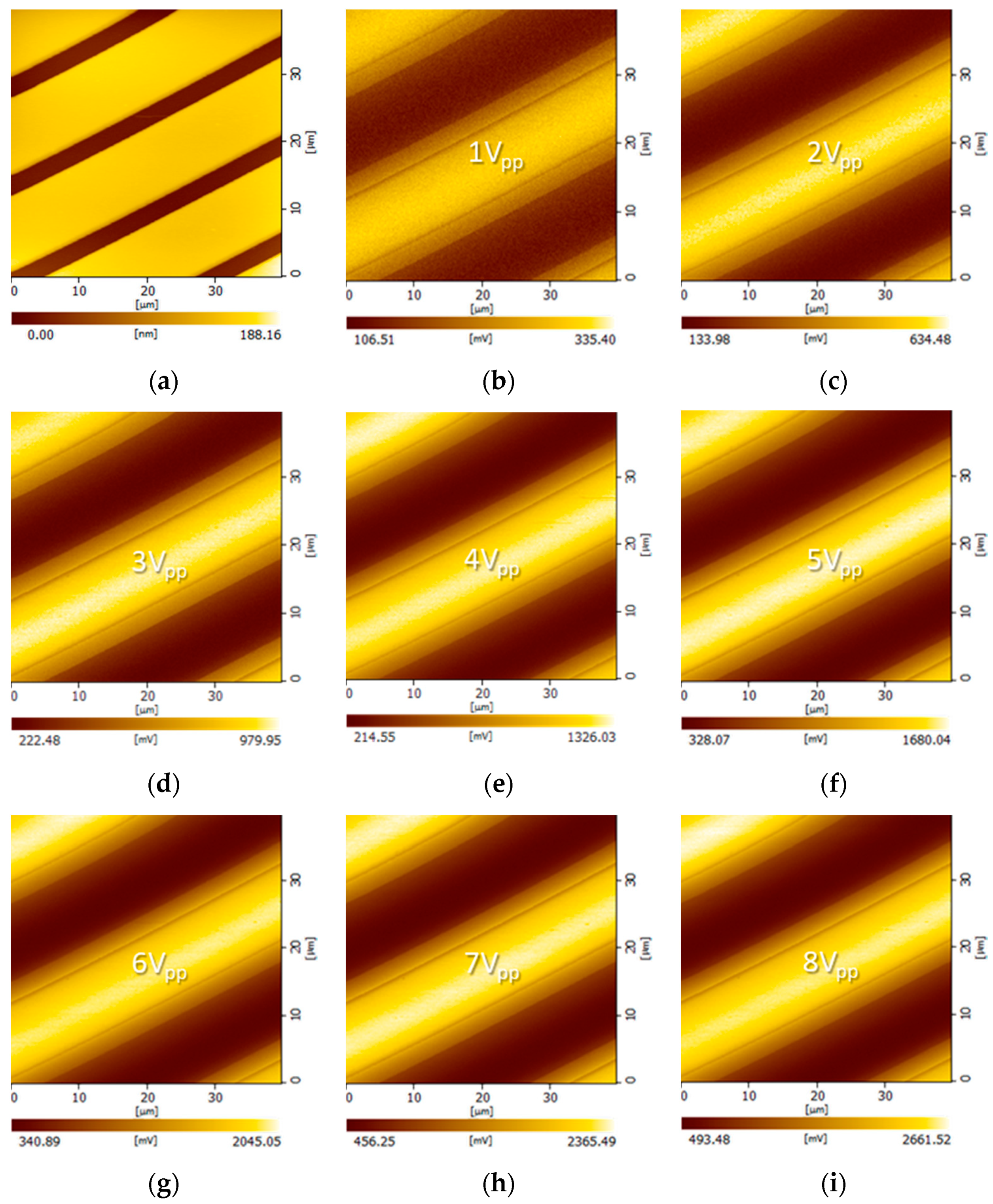
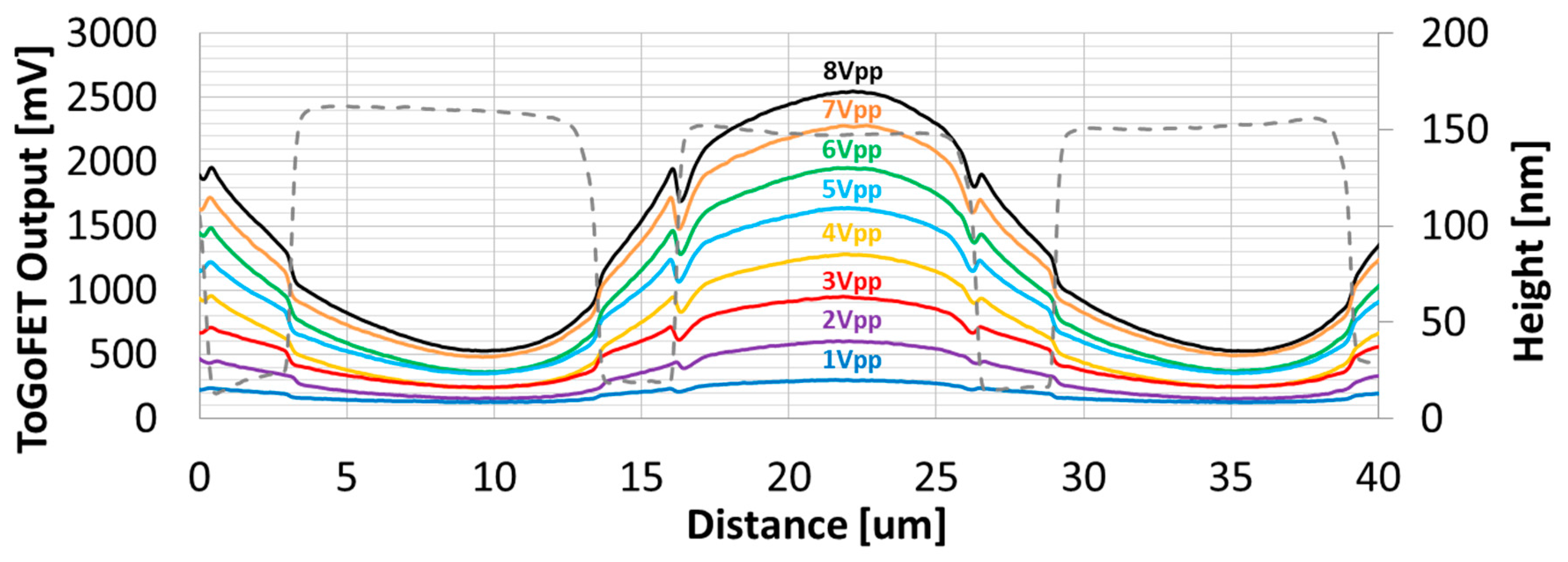
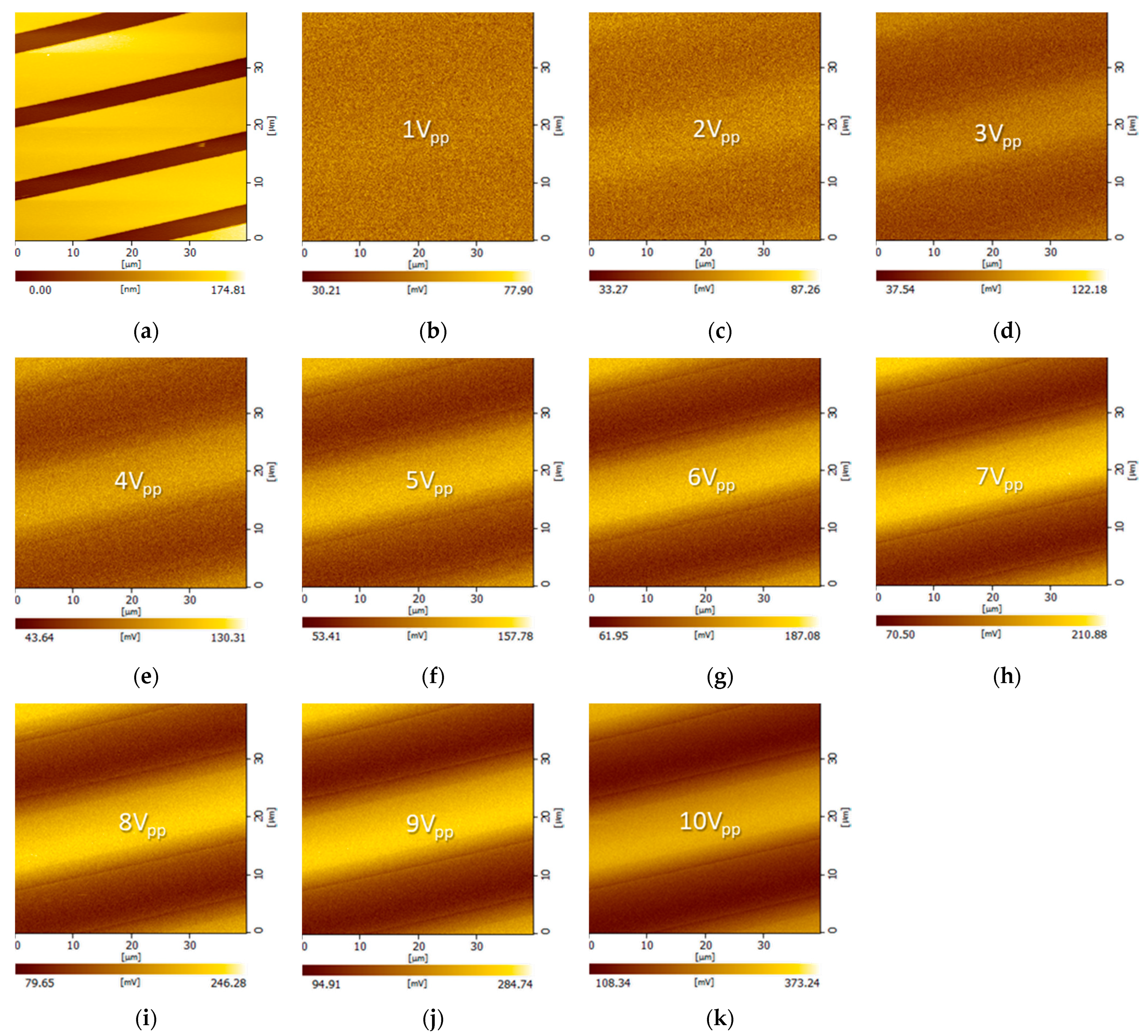
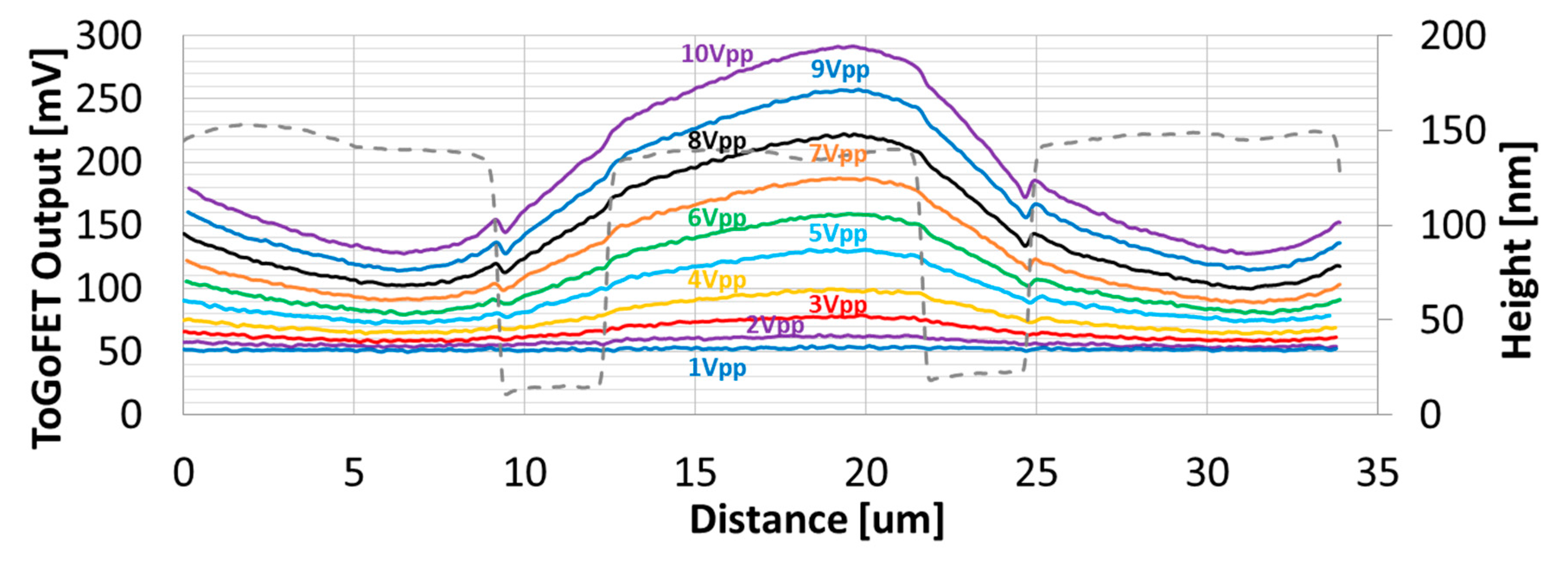
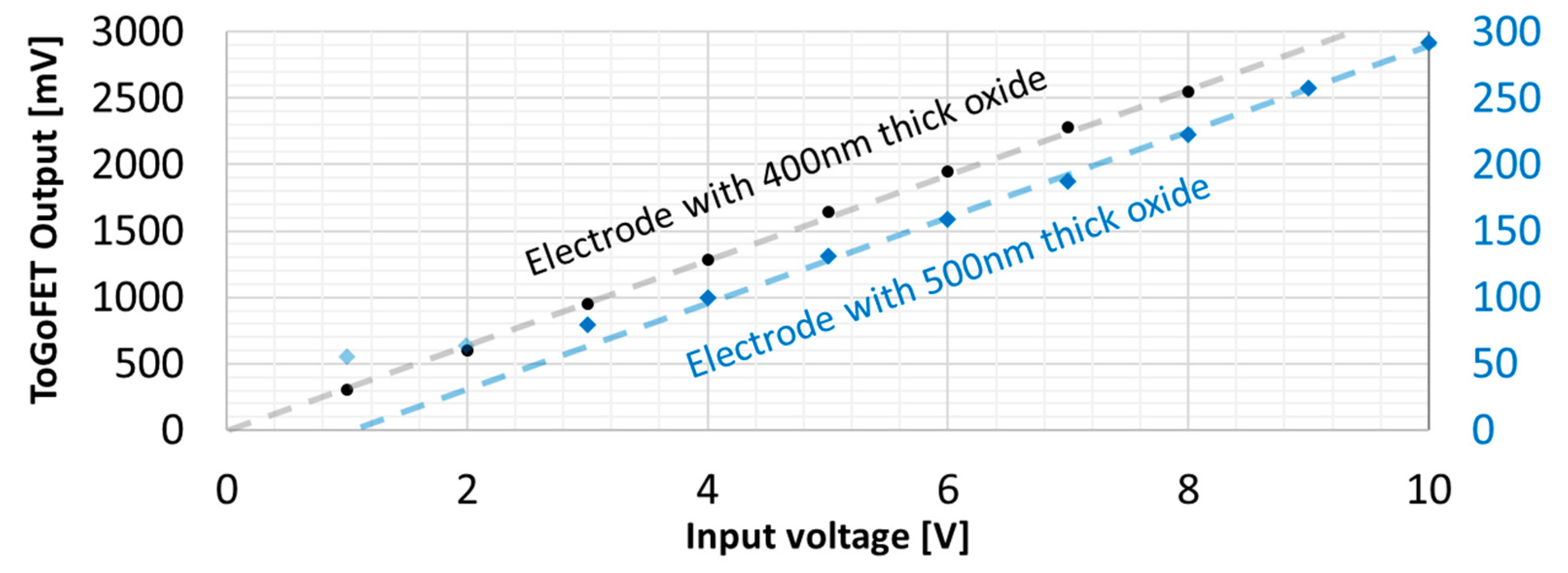
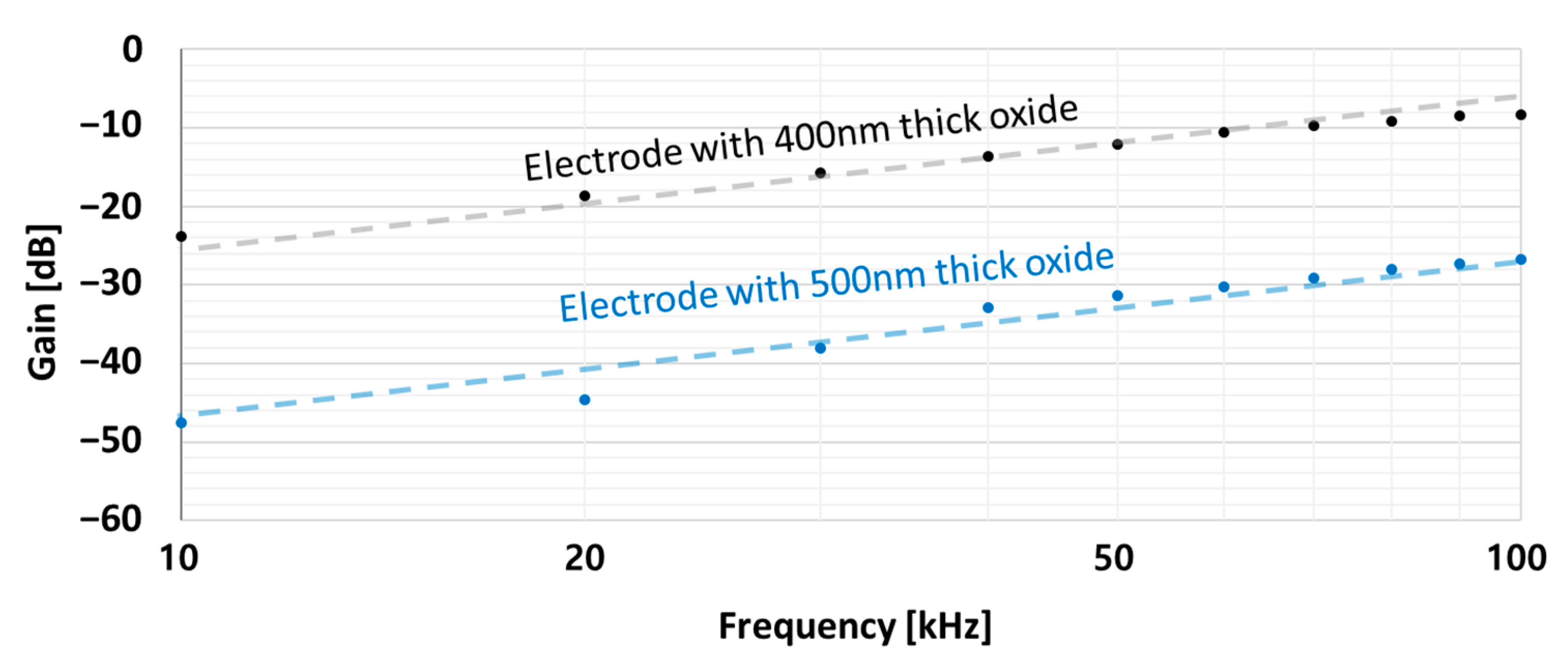
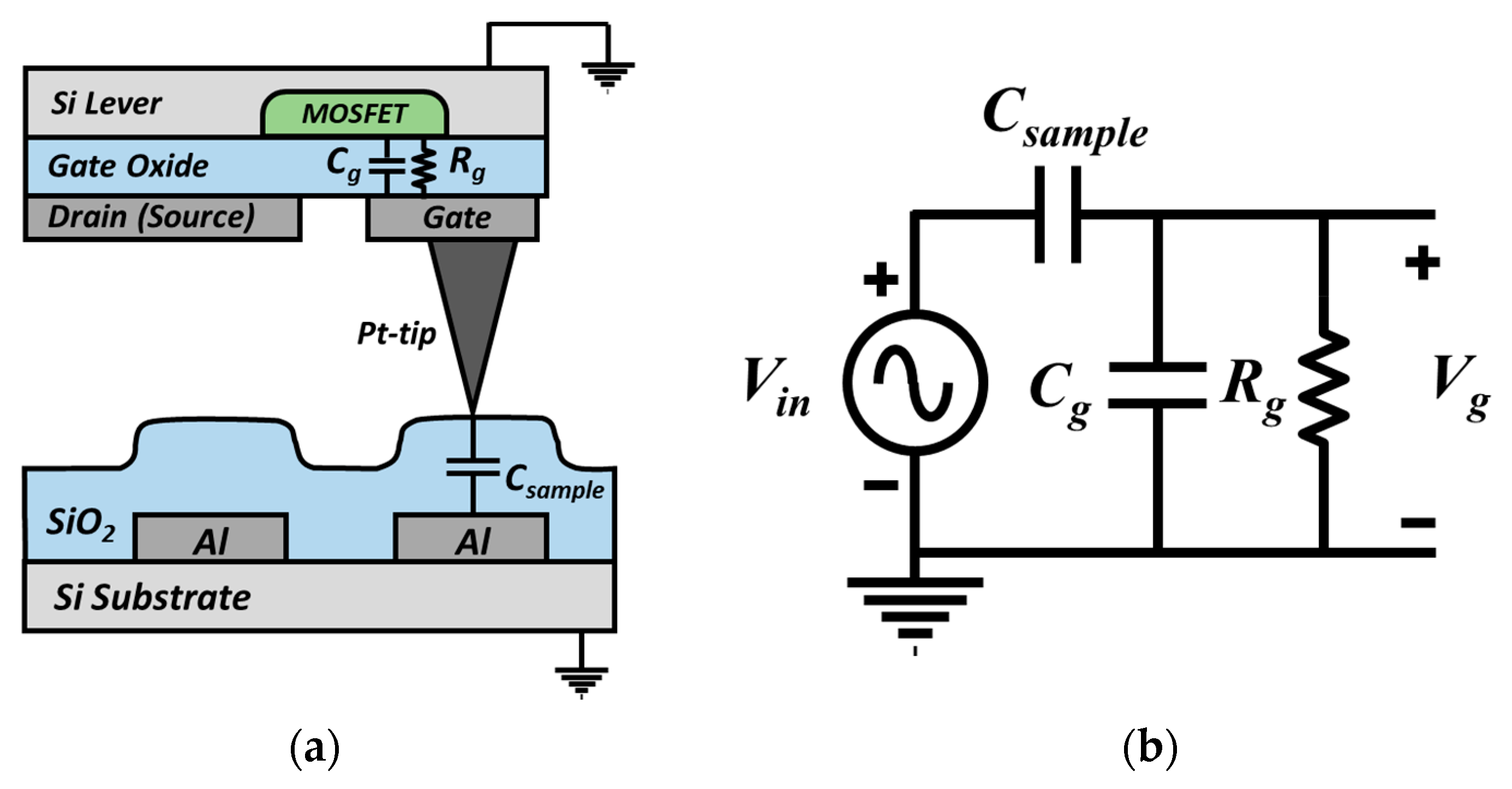
Publisher’s Note: MDPI stays neutral with regard to jurisdictional claims in published maps and institutional affiliations. |
© 2021 by the authors. Licensee MDPI, Basel, Switzerland. This article is an open access article distributed under the terms and conditions of the Creative Commons Attribution (CC BY) license (https://creativecommons.org/licenses/by/4.0/).
Share and Cite
Lee, H.; Shin, K.; Moon, W. Capacitive Measurements of SiO2 Films of Different Thicknesses Using a MOSFET-Based SPM Probe. Sensors 2021, 21, 4073. https://doi.org/10.3390/s21124073
Lee H, Shin K, Moon W. Capacitive Measurements of SiO2 Films of Different Thicknesses Using a MOSFET-Based SPM Probe. Sensors. 2021; 21(12):4073. https://doi.org/10.3390/s21124073
Chicago/Turabian StyleLee, Hoontaek, Kumjae Shin, and Wonkyu Moon. 2021. "Capacitive Measurements of SiO2 Films of Different Thicknesses Using a MOSFET-Based SPM Probe" Sensors 21, no. 12: 4073. https://doi.org/10.3390/s21124073
APA StyleLee, H., Shin, K., & Moon, W. (2021). Capacitive Measurements of SiO2 Films of Different Thicknesses Using a MOSFET-Based SPM Probe. Sensors, 21(12), 4073. https://doi.org/10.3390/s21124073





